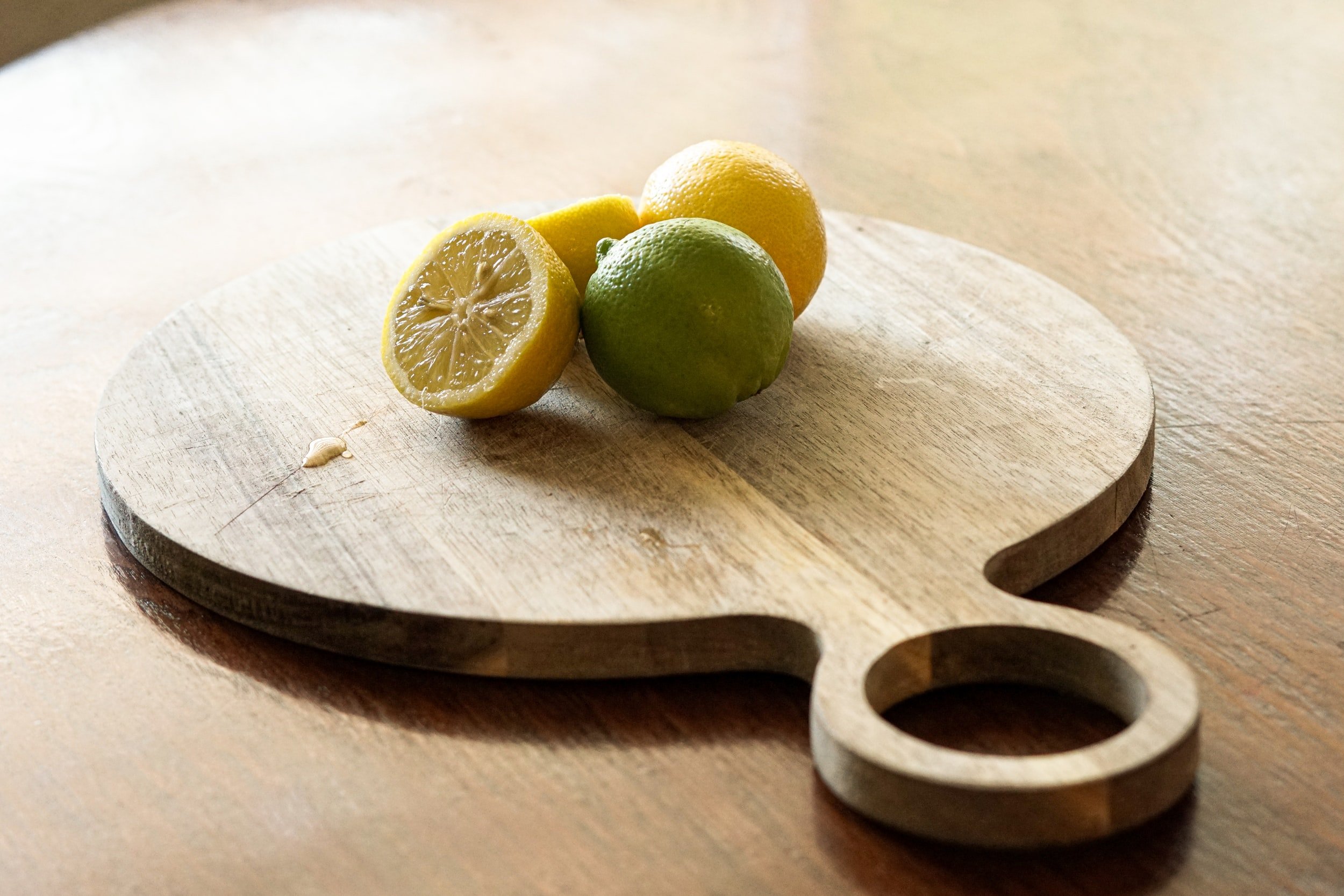Why Wooden Cutting Boards are Better Than Plastic
It’s no secret that in our kitchen we prefer using wooden cutting boards. In fact, we’ve amassed quite the collection.
We explain why we have so many here, but first let’s talk about why wood is always the better choice for your home. Plus, it turns out science backs us up.
1. More bumpy surfaces = less gross bacteria growth.
You’ve probably noticed that wooden cutting boards have a bumpy, raw surface. Contrary to what you probably think, that rough surface is actually a good thing. Bacteria don’t like to grow on bumpy surfaces, so wood cutting boards are actually less likely to promote bacterial growth.
2. Wood has natural antimicrobial properties.
Bacteria that end up on wooden cutting boards sink into the wood where they are unable to multiply and eventually die. On plastic cutting boards, the bacteria reside on the surface and grooves of the cutting board and continue to multiply even after cleaning. And for you skeptics… here’s a little proof.
3. Wood can handle heat.
Your wooden board can do double duty as a hot pad. Do you want melted plastic all over your roasting pan? Us either.
4. It’s easy to bring them back to life.
There are better things to spend your time thinking about than making sure that your absent-minded roommate isn’t destroying your lovingly chosen kitchen equipment. The great thing about wooden boards is that a little oil goes a long way toward bringing them back to life. And if things get really out of hand, you can always bring out the sandpaper and start over. Really, I’ve done it.
Here’s how to take care of your wooden cutting board:
Letting them dry completely is key since bacteria love moisture.
Hand wash both sides of the cutting board with hot soapy water, pat down, and let it air dry on its side so that both sides dry if you don’t have a way to hang them.
Taking care of pesky odors — we’re looking at you onions!
If you have pesky odors that won’t go away, use half a lemon with salt to scrub the surface. It’s magic. You can also use a solution of half water, half vinegar, or even hydrogen peroxide if you prefer. Just leave it on the surface for a few minutes and wipe it away.
Send your board to the spa every once in a while.
Give ‘em a good rubdown with mineral oil, olive oil, or beeswax once a month or so if you use them regularly to prolong their life span.
Finally, keep them away from the wash!
We’re hoping this is common knowledge, but DO NOT place them into the dishwasher. It’ll warp the wood, and wear them down over time. Truthfully it’s taken some training to get everyone in our households on the same page about this one, and one cycle won’t be the end of the world, but it’s better to start drilling home the concept that wood and knives need a quick hand-wash instead.
So there you have it. Four great reasons you should use a wooden board and how to care for them.
And hey, no one is going to display plastic boards, right? Why not enjoy the natural beauty of wood while you work. Go ahead, start collecting all shapes and sizes so you’ll be prepared for any and all occasions.
P.S. - If you’re curious like we were, here’s a bit of trivia as to how a wooden cutting board came to be in the first place:
In 1887, a midwestern mill owner named Conrad Boos cut a native sycamore to make a sturdy workspace for the local blacksmith to absorb the weight of heavy blacksmithing tools. Soon thereafter the local butcher noted its effectiveness and ordered one for himself. The gorgeous Boos Boards you’ve probably seen gracing the countertop of every chef on Youtube come from this factory!
Like this article? You’ll love our weekly email digest!











